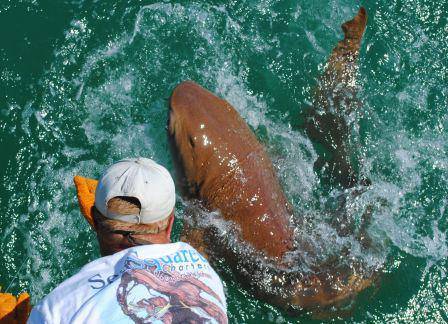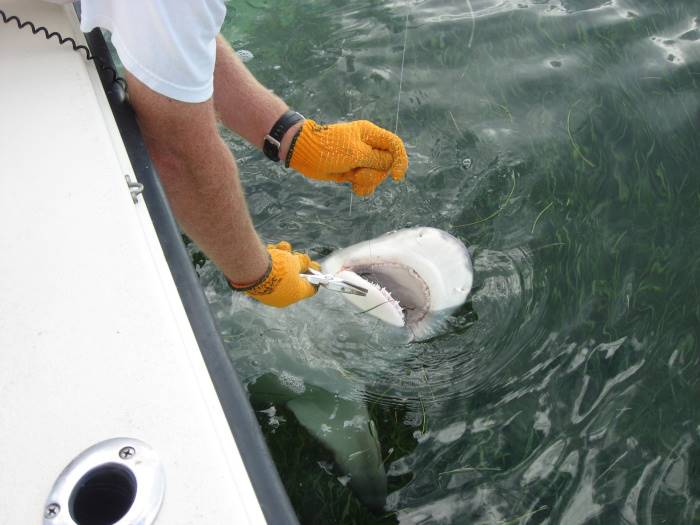Florida shark charter fishing an overlooked conservation partner
When Captain Chris Johnson of SeaSquared Charters takes his clients to his honey hole of a calm, grassy flat somewhere in the Florida Keys, they’ll catch as many as 16 sharks in a four-hour trip. Despite the frequent hook-ups, landing sharks on 20-pound spinning gear isn’t a walk in the park.
“The fish take off, dump a couple hundred yards of line and you gotta work ’em back to you,” Johnson said.
Once the shark is back at the boat, the clients get a few pictures and the shark swims free. Johnson’s operation, which he says is 100 percent catch-and-release, is a great example of fishing-based shark tourism highlighted in a recent study of the conservation ethic among Florida shark charters.
David Shiffman, study author and marine biologist at the University of Miami, studies the role of sharks in South Florida ecosystems as well as how people in the region perceive that role. He said shark conservationists tend to promote shark tourism based on SCUBA diving as a way for people to interact and learn more about sharks without killing anything.
But shark charters could also be an important partner in conservation efforts if captains practice catch-and-release. Shiffman’s study, which analyzed the websites of charter companies offering shark trips and surveyed dozens of captains, found that most of them do release sharks.
“There was a very strong conservation ethic that we found among charter boat fishermen in Florida with respect to sharks,” Shiffman said. “The majority said that they always or almost always practice catch and release when fishing for sharks. Many expressed concern about declining shark populations and how that would impact the ocean ecosystem.”
Shiffman said the captains they surveyed were concerned about some of the latest scientific research on shark population in decline and tended to practice catch and release even for species that don’t legally require it.
One concern raised by the study is that many charters appear to target hammerheads, which are considered endangered by the IUCN Red List of Threatened Species.
“They’re really bad candidates for catch-and-release,” Shiffman said. “They usually die from the stress of fishing even if they’re released.”
Johnson said his shark charters, which mostly target lemon sharks, make up around 20 percent of his business. He also offers trips for catch-and-eat species like grouper and snapper. Even before he added specific shark trips, clients on standard trips would occasionally hook a shark while fishing for other species. Back at the dock, all the clients could talk about was the shark they caught, making an afterthought of the dozens of keepers he was hanging on the sign for the classic charter photo-op.
Since turning to shark trips in 2009, Johnson said he’s booked people from around the world, including China, Spain and Switzerland. Some are anglers looking to learn how to fight big fish on light tackle so they don’t blow it later when they’ve got a sailfish on the line. Others are families looking for an eco-friendly way to spend a day on the water. For those trips, Johnson seems just as happy to put people on sharks as he is to teach what species they’re looking at and why the sharks are there.
“It’s quality fishing with a great experience,” Johnson said. “We get ’em next to the boat and take a few pictures and cut ’em loose and do it again. And again and again.”
The study is published in the journal Fisheries.





0 comments